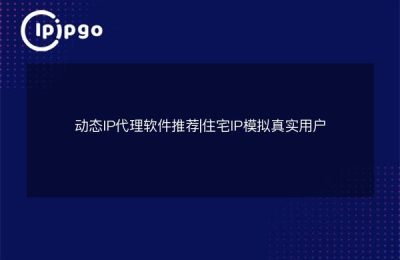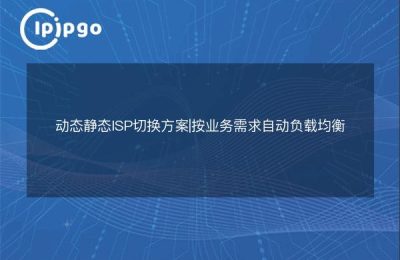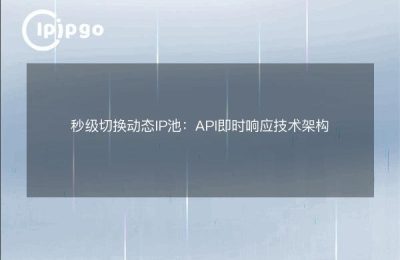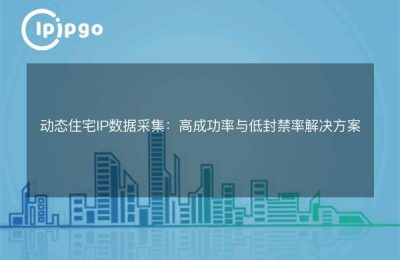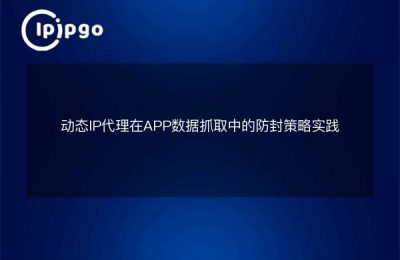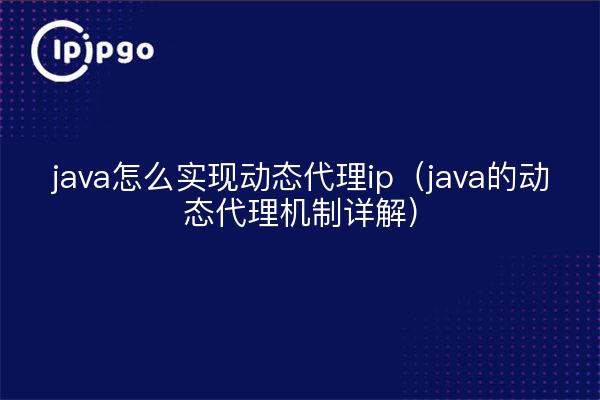
The whole thing is like an ingenious magic show, and we need to have some understanding of Java's dynamic proxy mechanism in order to navigate through it and implement dynamic proxy IP.
java how to realize dynamic proxy ip
First, we need to know what Java's dynamic agents mean. Imagine that you see a mysterious magician on the street, he exquisitely changed the hands of the cards, so that you are dazzled, do not know what to do. Java's dynamic agent, as if the magician's hands of cards, can not change the logic of the original code in the case, to achieve some additional operations.
So how does dynamic proxy IP play a role in this? Suppose you are surfing the Internet, but for some reason you need to access the same website through different IP addresses, as if you were changing identities in different cities, discreetly accomplishing your tasks. Dynamic Proxy IP, on the other hand, is designed to allow you to dynamically switch between different IP addresses while your program is running, bypassing website restrictions as if you were changing identities.
Next, let's look at how to use Java's dynamic proxy mechanism to implement a dynamic proxy IP. we'll start by defining an interface, say called Proxy, to specify the methods that the proxy class needs to implement:
"`java
public interface Proxy {
void doSomething().
}
“`
Then, we create a real business class, say called RealSubject, which implements the methods of the Proxy interface:
"`java
public class RealSubject implements Proxy {
@Override
public void doSomething() {
System.out.println("RealSubject is doing something.");
}
}
“`
Next, we create a proxy class called ProxyHandler, which implements the InvocationHandler interface and implements dynamic switching of IPs in the invoke method:
"`java
import java.lang.reflect.InvocationHandler;
import java.lang.reflect.
public class ProxyHandler implements InvocationHandler {
private Proxy realSubject.
public ProxyHandler(Proxy realSubject) {
this.realSubject = realSubject;
}
@Override
public Object invoke(Object proxy, Method method, Object[] args) throws Throwable {
// Implement the dynamic proxy IP logic here
System.out.println("Switching IP before method execution...");
Object result = method.invoke(realSubject, args);
System.out.println("Switching back to original IP after method execution...");
return result;
}
}
“`
Finally, let's look at how to implement dynamic proxy IPs using the dynamic proxy mechanism:
"`java
import java.lang.reflect.Proxy;
public class Main {
public static void main(String[] args) {
Proxy realSubject = new RealSubject();
Proxy proxy = (Proxy) Proxy.newProxyInstance(
realSubject.getClass().getClassLoader(),
realSubject.getClass().getInterfaces(),
new ProxyHandler(realSubject)
);
proxy.doSomething();
}
}
“`
Through the dynamic proxy mechanism, we realize the dynamic switching of IPs, as if we have completed a wonderful magic show.
java's dynamic proxy mechanism explained
The dynamic agent mechanism is like a magnificent stage play, which is completed by multiple characters working together to make the whole story lively and interesting.
The first thing we want to introduce is the three main roles of a dynamic proxy: the proxy interface, the real role and the proxy role. The proxy interface specifies the methods that need to be implemented by the proxy role and the real role, the real role is the real business logic that implements the proxy interface, and the proxy role plays the role of an intermediary, responsible for performing some additional operations on top of the real role.
Next, let's look at how dynamic proxies work. When a proxy class calls a method of the interface being proxied, it actually invokes the logic in the proxy handler through the invoke method. The proxy processor is able to perform some additional operations before and after the method execution, such as dynamically switching IP addresses, as if it were quietly completing a role change on stage.
Finally, let's review the process of implementing a dynamic proxy. We first define an interface, then create a real business class to implement this interface, then create a proxy handler to implement the InvocationHandler interface and implement dynamic switching of IPs in the invoke method. Eventually, by calling the newProxyInstance method of the Proxy class, we are able to dynamically generate the proxy object and implement dynamic proxying of IPs in it.
Through a detailed understanding of the dynamic proxy mechanism, we will be able to flexibly implement dynamic proxy IP in it, as if it were an unexpected performance in a wonderful stage play.

